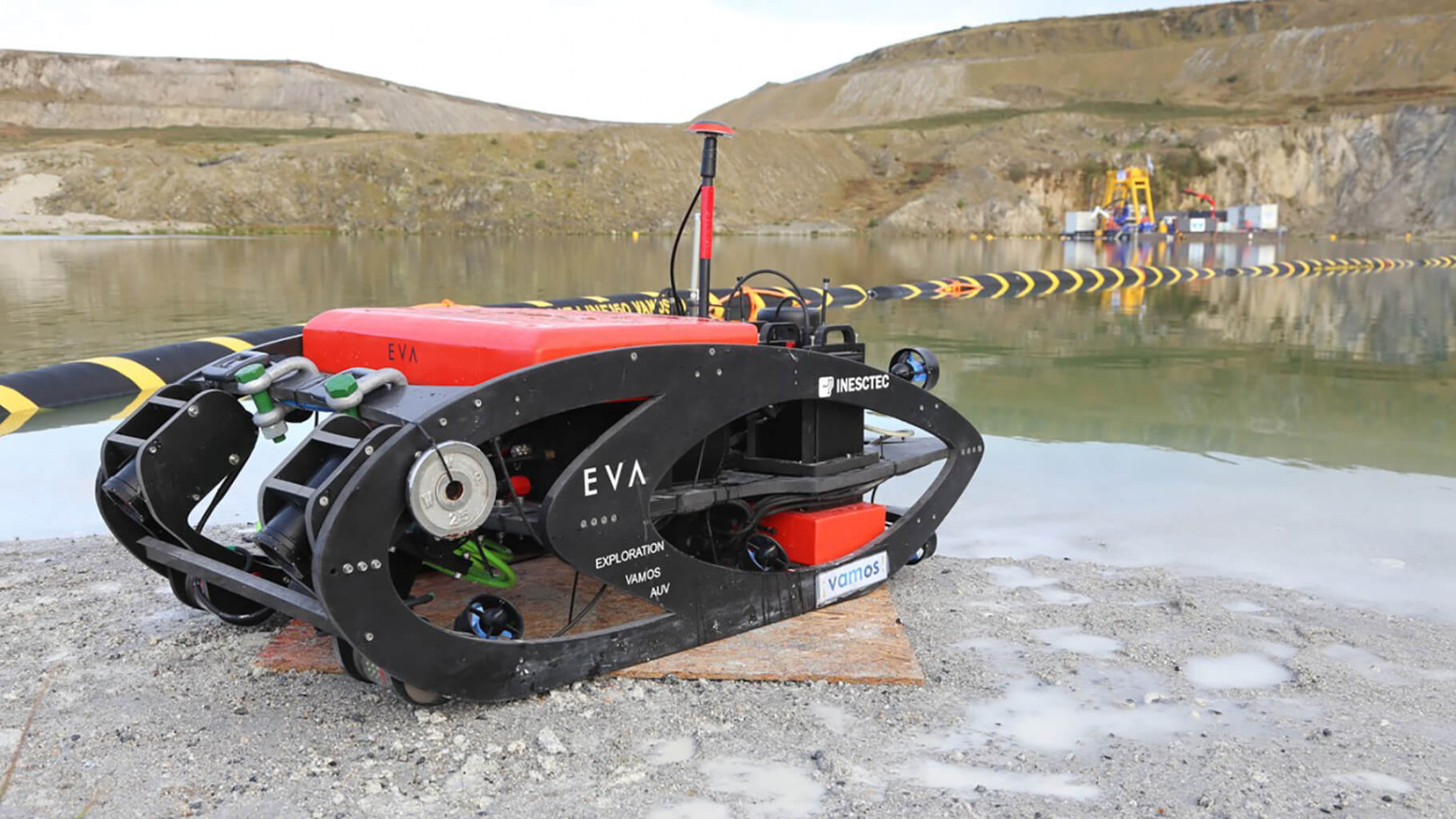Project tests prototype for underwater exploration
A team of researchers from the Centre for Robotics and Autonomous Systems (CRAS) of INESC TEC was in Lee Moor (Devon, United Kingdom) testing the prototype created under European project ¡VAMOS! (Viable Alternative Mine Operating).
12th December 2017
The prototype for underwater exploration of land mines, which has been in development since 2015, was tested for the first time with success. The test was carried out in the United Kingdom during the month of October with the help of the partners that have been working on the several components of the project, namely INESC TEC (Portugal), SMD Ltd (United Kingdom) and Damen Dredging Equipment (the Netherlands).
This was the first test of the integrated system in a real environment carried out in Lee Moor (Devon, United Kingdom). Both the several components of the project and their integrated operation were validated. Besides the technical tests, relevant data for the evaluation of the productivity of the system was also collected.
During the field tests, several vehicle launch and recovery operations were carried out from the surface support platform. Other actions included local mining and the operation of the support autonomous underwater vehicle.
In this project, INESC TEC is responsible for the development of the entire positioning, navigation and perception system of the multiple robotic systems, as well as for the development of innovative autonomous underwater vehicles capable of supporting the mining activity (EVA – Exploration VAMOS AUV).
The test also included a visit to the data and unit control centre using virtual reality, where all the machinery is controlled and where the data is collected in real-time.
“We are very happy with the results we achieved up to this phase of the project”, states Eduardo Silva, coordinator of CRAS. The technical coordinator of the project, Stef Kapusniak, highlighted the fact that they managed to overcome civil problems and have good access to the Lee Moor pit during the tests. Kapusniak was recently in Portugal for the “Strongmar – A Sea of Technology” conference, which took place at the Almeida Garret library on 16 November.
Other points highlighted by the technical coordinator of iVAMOS! are the increase in the differentiation capacity of minerals, the processing of data almost in real-time, the provision of good quality images to pilots and the fact that the integrated control systems worked well.
The prototype is now being demobilised in the United Kingdom, from where it will be transported to Bosnia and Herzegovina, where the second test will be conducted in 2018.
The equipment that is being developed to extract raw materials from mines in Europe is safer and less polluting, as it does not use explosions nor contaminate water.
According to Eduardo Silva, the new method that is being developed under iVAMOS! “brings huge environmental benefits because there will no longer be explosions and disturbances in the vicinity of the mines, there won’t be a need for trucks to transport the ore to the surface, and the groundwater level won’t be contaminated”.
The prototype under development is a mining machine with remote supervision composed of a tool that breaks rocks, which, in turn, are drawn by suction to the surface, where a mining support system is located. According to the coordinator, in traditional mining processes, the water from the mine is removed in order to extract the ore, which poses a serious environmental problem. This problem can be solved using equipment like the one being developed under iVAMOS!, which does not require water to be removed.
For many years now, Europe has not been concerned with extracting basic raw materials, which has led to 96% of raw materials to be imported. A few years ago, European countries decided to analyse once more the possibility of increasing investment in extraction, as there are approximately 30,000 mines in Europe, 2000 of which are open-pit mines.
The INESC TEC researcher says that the results that have been achieved confirm that this new way of mining will contribute to the recovery of the European mining industry. “During a first phase, it will allow to get back to work in a substantial part of the mines that were abandoned in recent years and during a second phase, it will contribute with technology for deep sea mining”, states the coordinator of CRAS.
Project iVAMOS! has an investment of 12.6 million euros, 9.2 of which are funded by the European Commission under the H2020 funding programme. iVAMOS! has partners in Portugal, the United Kingdom, Belgium, Spain, the Netherlands, Bosnia and Herzegovina, Austria, Slovenia and Germany.
For more information: http://vamos-project.eu/.
The INESC TEC researcher mentioned in this news piece is associated with INESC TEC and IPP-ISEP.


